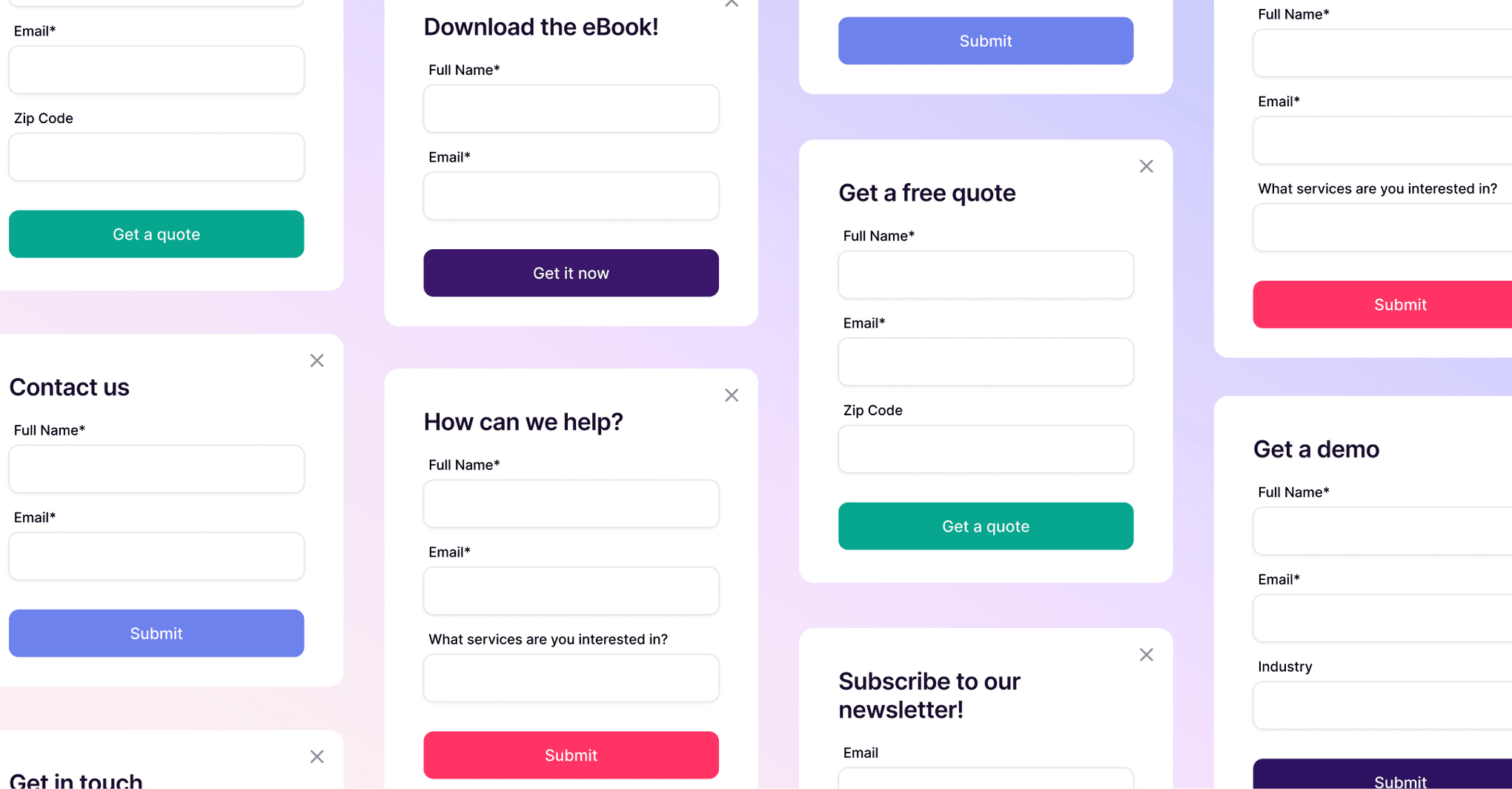Amy Copadis
Contributor
How many of your (and other sales pros) sales emails actually get opened?
According to research by Statista, the business supplies and services industry has an average open rate of 12.1%. Other industries have an even lower rate.
And out of the people who do read your emails, how many will respond?
Your prospects are receiving dozens, if not hundreds, of new emails every single day. That means you have to compete, not just against your competition, but also against the busy inboxes of your prospects by focusing on personalization.
Your sales emails and prospecting emails can’t just be “good enough.” In order to succeed, your sales emails need to be excellent. And what better way to improve your sales emails than to learn from emails that have already proved their worth with a potential customer?
Today, we’re going to dive into four great sales email examples and talk about what makes them great.
First, let’s discuss the six essential elements of a truly great sales email, and then we’ll see how our prospecting examples match up.
What are six essential elements of a great sales email?
1. Create a subject line that piques curiosity.
It’s natural for us to judge an email by its subject line.
In fact, according to one study, 35% of people open emails solely based on what they see in the subject line.
That means your subject lines need to be specific and must arouse enough interest to merit a click from every potential customer, instead of following generic sales prospecting email templates.
2. Write an opening line that isn’t, “Hello, my name is…”
Those four words in cold prospecting signal the death of the sales email.
No matter how intriguing your prospecting email subject line is, your opener must bring the reader’s interest to a peak.
Your sales prospecting email subject line draws prospects in, but your opener keeps them reading.
3. Show that you truly know your prospect.
We all hate generic sales emails. So, even if you’re using a sales email template, don’t resign yourself to repeating the same words over and over again.
Make sure you have a line or two that prove you know your prospect, their company, and what they really need.
Don’t sell them your product when working on email prospecting. Show them how their company will benefit from using it, through personalization.
4. Be specific without being wordy.
Have you ever finished reading a sales email and wondered, “So, what does this company do?”
Don’t leave your prospects guessing. Make sure you’re specific in your sales prospecting email when talking about what your company does, what services you’re offering, and the benefits.
However, you don’t need to be wordy in order to be specific. If you can’t explain yourself in a few words, you need to work harder on being concise.
Why is this so important when you and sales reps are executing sales prospecting?
Because short, snappy content in an email has been proven to get a better response rate to messages from sales reps.
According to this study, it’s better to stay in the sweet spots between 900–1,000 characters or 1,400–1,500 characters, which sounds like a lot, but is (approximately) less than 200 words. However, emails for prospecting shouldn’t be too short either, as evidenced by comparatively low response rates for emails with 100 to 500 words.
5. Close with simple options.
Closers are both the hardest and the most important part of your sales email. Do you go for the hard sell? Do you try to set up a call? Do you offer a demo?
Ultimately, the best route with email prospecting may depend on your industry, which is why it’s good to A/B test your email closers. Whatever you ask your prospect to do at the end of the email, make it clear how and why to proceed.
One trick many successful cold emails use is to give the option to say no. While it may seem counterintuitive, giving prospects a way out engenders trust and makes them feel like there’s no pressure. In turn, that can lead to a much better response rate!
6. Prepare a follow-up email that seals the deal.
Your sales prospecting work isn’t done after you send your first email.
Following up after the original email is one of the best ways to bring your prospects in and get them to close a deal. Crafting follow-ups that are just as mind-blowing as your original sales email is essential to improving your response rate.
Now that we know what a great sales email should include, are you ready to see how it’s done in the real world with prospecting email examples?
Four great sales email examples that you’ll want to steal:
Jake Jorgovan used this email to land a client that paid him $4,250.
This email is genius, and hits four of the above essential elements of a good sales email:
Home-run opener
Jake’s opening paragraph gets right to the point, tells the prospect how he found them, and the exact reason for his email.
While he does use the “My name is…,” he doesn’t use it in the opening sentence. This allows him to introduce himself without sounding like he’s sending a prefab template.
Show you know them
Instead of talking about how great his website rebuild was, Jake focused on benefits: “mobile friendly,” “extremely easy for anyone at the company to update.” These are issues that his prospects are concerned about.
Concisely specific
This email makes its points without taking up the prospect’s entire afternoon.
He talks about results and leaves room for specific errors that he was able to fix in his client’s website. He also gives a specific time frame for the job.
Simple closer
The closing lines are completely no-pressure (as shown in the prospecting email examples), but still let the prospect know what they need to do if they’re interested.
Deal-sealing follow-up
Here’s Jake’s follow up email:
Again, there’s no pressure, the email is short, and it shows the prospect exactly what they need to do to continue the conversation.
LeadFuze made great use of questions and kept it short and sweet.
LeadFuze does an excellent job with their cold emails, with fantastic results: within 12 months they grew their startup to $30k per month!
What makes this email so great?
Curious subject line
Need some more leads?
Using a question in the subject line is a fantastic way to grab your prospect’s attention.
As soon as their prospect sees the question, they’re already answering it in their minds. That means they’re already engaging with your email!
Home-run opener
Again, a great use of a question here. This draws in the prospect and once again gets them to engage with your email.
The use of questions in this email almost makes it seem like a conversation instead of a sales pitch.
Show you know them
This email uses one quick sentence to show what prospects can do with their product. While simple, this sentence shows that LeadFuze knows exactly what their customers need.
Concisely specific
Is it brief? Check.
In just four sentences, this email shows exactly what LeadFuze does, the benefits of using the product, a handy usage example, and a snappy closer.
This sales email example is a beautiful marriage of specificity and brevity!
Simple closer
Again, a question!
This draws the reader in, but lets off a little pressure with this genius P.S.:
This allows LeadFuze to ensure they’ve got the right contact person, and gives the prospect an easy way out if they’re not interested.
FullStory captured their audience’s attention and nailed their opener.
Curious subject line
The subject line for this email was “Magic Goggles.”
They’ve actually made it harder not to open this email by using a subject that generates an incredible amount of curiosity.
Home-run opener
FullStory dives straight into the purpose of their email. They also use casual language (e.g. “give you a quick shout”) which makes this email sound like it’s coming from a person, not a generic template.
Show you know them
“Understand your customer experiences like never before.”
Exciting, isn’t it? Obviously, this company knows what their prospects want and is ready to offer exactly that.
Concisely specific
This email contains a total of 30 words, but clearly shows what FullStory is all about and why this prospect should care.
The 30-second demo video is a great use of media, but it’s still short: there’s hardly any commitment required from the prospect.
Simple closer
There are two clear options: sign up for the free trial or shoot an email with any questions.
Again, there’s no pressure for the prospect, but it’s still very clear what they need to do to continue.
Deal-sealing follow-up
In this case, after watching the 30-second demo video, the prospect receives this follow up email:
This follow-up closes the deal by offering what the prospect wants.
Also, the use of the phrase “no-strings-attached,” and suggested time frame of less than 10 minutes shows that there’s no pressure, giving the prospect even more incentive to respond.
This managed print service company wrote an email that sparks conversation… about printers.
Curious subject line
Once again, this email uses a question in the subject line to draw in prospects.
Home-run opener
Another question that makes the prospect think. This question also plays on a common fear in the industry.
Show you know them
Using relevant industry news is a great way to let your prospects know that you’re up-to-date.
This company also shows they understand the needs of their prospects by touching on a pain point that relates to their product.
Simple closer
Interestingly, this sales email doesn’t try to sell anything. Instead, they’ve crafted an email that sparks conversations.
When you ask a question at the end of the email, you invite replies. This makes your prospect the focus of the email and encourages them to respond. When they do respond, you get a unique glimpse of their specific needs.
That, in turn, gives you a better idea of how to approach them with a sales pitch.
Are you ready to steal these awesome sales email examples?
It’s harder than ever to get your prospects to open your emails, let alone reply to them.
However, taking lessons from these great sales email examples can give you a head-start in the race for your prospects’ attention.






